Sean Connery (1930-2020)
31st October 2020
Matthew Field remembers the star born to be Bond
The original James Bond, Sean Connery, who rocketed to international stardom as agent 007, has died in his sleep, at his home in the Bahamas. He was 90. In one of cinema’s most famous introductions, Sean Connery delivered the words, “Bond...James Bond” through a haze of cigarette smoke, in the opening minutes of 'Dr. No' unleashing a new hero on unsuspecting cinema audiences around the world.
Born in Edinburgh, Scotland, on 25 August 1930, Thomas Sean Connery grew up in the industrial suburb known as Fountainbridge, which he described as “a grim no man’s land.” He began work at the age of 9 and left school at 13. He polished coffins, delivered milk and was a swimming pool lifeguard before signing up for a short-lived career in the Royal Navy. An amateur body-builder, his muscular physique secured Connery modeling work and he was soon persuaded to audition for the Mr Universe competition in London.
Connery came third place but was spotted by Joshua Logan who was casting the British production of ‘South Pacific.’ Connery wrote in his memoir, 'Being A Scot', “All you had to do was to look like an American and do a couple of handsprings before springing up and singing, ‘There’s Nothing Like a Dame.’” He embarked on a two-year contract touring Great Britain. “I had no ambition then to be an actor – it was purely the money and the fun that got me hooked.”
During the tour Connery and his chorus chums formed their own football team taking on similar sides in each town they visited. When playing the Manchester United junior team, Connery was spotted by legendary manager, Matt Busby, who offered him a trial. He turned down the chance of a soccer career when his mentor, Richard Henderson, one of ‘South Pacific’s’ leading American actors, advised that a career as an actor could be much more enduring. Connery worked on his accent, playing down his “Scottish burr” and educated himself by reading a formidable list of texts handed to him by Henderson with Joyce, Tolstoy and Shakespeare amongst them.
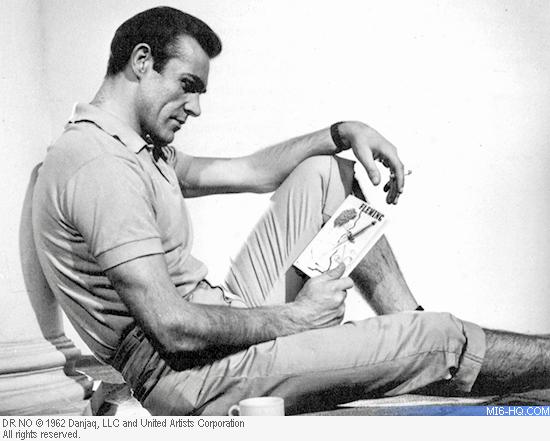
He began securing part time rep work, followed by small parts in live TV. In 1956, when Jack Palance pulled out of the lead role in Alvin Rakoff’s BBC production of ‘Requiem For A Heavyweight’ Connery was cast as a last-minute replacement as battered prize-fighter, Mountain McClintock. The play was a hit, with rave reviews and brought Connery to the attention of producers and directors. He landed small supporting roles in British B-movies ‘No Road Back’ (1956), ‘Time Lock’ (1957) and Cy Endfield’s ‘Hell Drivers’ (1957).
In 1961, after Albert R. Broccoli and Harry Saltzman had signed a deal with United Artists to bring Ian Fleming’s novels to the silver screen, the hunt was on for an actor to bring James Bond from the printed page to celluloid. Broccoli and Saltzman considered many actors including Cary Grant, David Niven and even Roger Moore.
Many individuals have taken credit for bringing Connery to the attention of the producers. Lana Turner was the first to introduce Broccoli to the Scotsman on the set of ‘Another Time, Another Place’ in 1958. Cubby’s first impressions were, “He was a handsome, personable guy, projecting a kind of animal virility. He was tall, with a strong physical presence and there was just the right hint of threat behind that hard smile and faint Scottish burr.’ Broccoli could see the hidden appeal in the actor, “The movie he was making with Lana was poor, but it revealed other potentials in Connery. A flair for wearing stylish clothes and an easy, confident style in front of the cameras. It was this image that persisted in my mind.”
In summer 1961, while at Goldwyn Studios in Los Angeles, Cubby attended a screening of the live-action Disney musical ‘Darby O’Gill and the Little People’ (1959) – one of Connery’s first leading roles. The producer's wife, Dana Broccoli, recalled, “[Cubby] said, ‘I’ve just seen an actor and I think he’s terrific but I don’t know if he has any sex appeal.’ I was just knocked out by him. I thought he was just incredible.” Bond editor and future director, Peter Hunt also took credit, and recalled that while working on the Connery film, ‘On The Fiddle’ (1961), he sent a couple of reels over to Broccoli and Saltzman to consider.
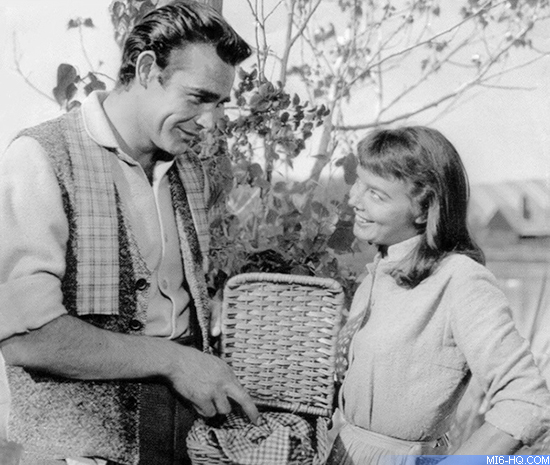
Connery first met Broccoli and Saltzman in their Mayfair office dressed in baggy, un-pressed trousers, a brown shirt without a tie and pounded and thumped the desk with his own demands. Broccoli said, “I think that is what impressed us – the fact that he had balls.” Leaving the meeting, Saltzman said they knew they had their man as they watched him bounce “across the street like he was superman.”
However, Ian Fleming was not convinced. He felt a working class Scotsman did not have the social graces to play his public school hero. Connery told Mark Cousins in 1997, “I never got introduced to Fleming until I was into the movie – but I know he was not that happy with me as a choice. He called me, or told somebody that I was an over-developed stuntman. He never said it to me. But when I did eventually meet him he was very interesting, erudite and a snob – a real snob. But his company was very good for a limited time.”
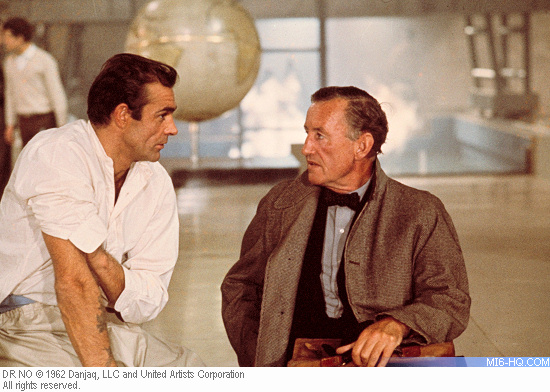
United Artists agreed with Fleming and famously sent the producers a cable, which read, “New York did not care for Connery feels we can do better.” But Broccoli and Saltzman stuck with their man. ‘Dr. No’s’ director, Terence Young, educated Connery and tutored him into becoming the refined gentleman spy. Young schooled Connery in the background and manners one would expect of Fleming’s Eton and Fettes educated secret agent. “Terence took me on a trip to get the clothes, and it was eye opener. The budget on the clothes was astronomical in relation to the film.” Young advised Connery to sleep in his tailor made suits and taught the actor to eat with his mouth closed. Connery also worked with Swedish ballet dancer Yat Malmgren to perfect Bond’s panther-like prowl. He was not a RADA-trained thesp, but a contemporary, tough breed of British hero. The Scot was enthusiastic with his breakthrough role and said, “It was like asking a boy who was crazy about cars if he’d mind having a Jaguar as a present.”
Connery had his own ideas on how to play James Bond. Having only read two of Ian Fleming's books prior to filming ‘Dr. No’, he admitted, “I wasn't all that in sympathy with the character. In fact, I thought to myself that I probably wouldn't even like Bond if I met him on the street. I'm referring to the way he was conceived in the novels, of course.” He told GQ magazine in 1989, “I used strong and commanding movements, not with weight, but to show how Bond is always in control of a scene.”
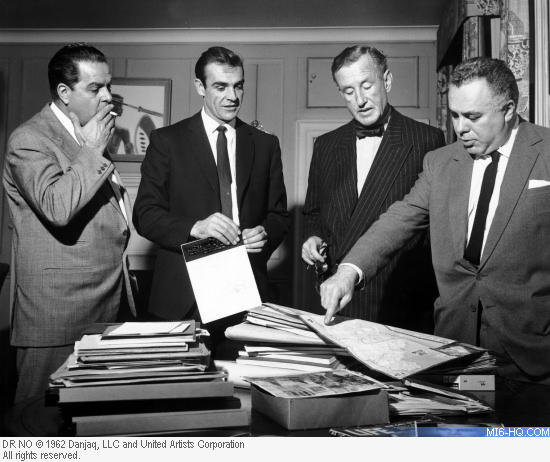
‘Dr. No’ began production in January 1962 in Jamaica. Connery had fond memories of the shoot describing it as “ a poverty stricken production. I remember Harry Saltzman and Cubby Broccoli were even out with spades preparing the beach, we didn’t have the kind of equipment you could fly in out of there, and hand moving the sand – that was how much money we had.”
The star was the first to admit that nobody could foresee ‘Dr. No’s’ success. “I was an unknown and we were projecting an English secret agent as a superhero. There were times when Terence Young, and I were on location both thinking, ‘What on earth have we here? Will anyone want to watch?’”
‘Dr. No’ played well in the UK while the film was a slow burner in America. Connery’s performance was the perfect blend of nonchalance, arrogance and sophistication. Broccoli noted, “Women loved him, men wanted to be like him – the impeccable manners, the flare, the sex appeal.”

Preparations began immediately on 007’s second adventure, 'From Russia With Love' (1963). “That is my favourite of the films,” Connery admitted. “I liked the story very much and I think it had more credibility than 'Goldfinger' (1964) and 'Thunderball' (1965), which were quite fantastic. And, of course as the films got bigger and more expensive, they became more involved with hardware than people.”
However it was ‘Goldfinger’ that firmly established Sean Connery as James Bond 007. He re-negotiated his deal with the producers after the modest £6,000 he received for ‘Dr. No’. He was now getting $50,000 plus an undisclosed percentage. Connery was still having fun with Bond, “In ‘Dr. No’, the character was established. By the end of the second film the audience had thoroughly got hold of him. After that the interesting thing was to surprise people who thought they knew how he was going to react to a situation. You’d play the reality, play the humour, have a bit of playful repartee with the audience and do something unexpected.”

‘Goldfinger’ became a box office smash around the world. In the 1990s Connery admitted to having only seen his glittering performance once when it premiered, and only viewed it for a second time when his grand-daughter requested that he watch a Bond film with her.
The 007 machine was unstoppable, and with the fourth movie ‘Thunderball’, Bondmania hit an all time high. Magazines and newspapers were publishing spreads of Connery in every conceivable pose as James Bond. He was so famous that publications with his face on the cover, could sell more copies than Jackie Kennedy. Connery began airing his frustrations to the hundreds of journalists who visited the set in Nassau. He told Playboy magazine, “There are a lot of things I did before Bond – like playing the classics on stage – that don’t seem to get publicised. So, you see, this Bond image is a problem in a way and a bit of a bore, but one has just got to live with it.” To another reporter he described James Bond as “a Frankenstein monster.”
That Playboy interview would plague Connery for the rest of his career. He was asked how did he felt about roughing up a woman, as Bond sometimes had to do? He nonchalantly replied he saw nothing wrong with it. Taken out of context, it was rediscovered and used to challenge him numerous times, most prolifically by American TV presenter, Barbara Walters.
Bond was now making a number of people very rich and Connery felt he was not one of them. “I think I should get every penny I’m entitled to,” he said. Years later Connery reportedly complained about “a lot of fat slob producers living off the back of lean actors.” Broccoli’s reaction was quite simple, “All I ever did to Sean Connery was make him an international movie star and a very, very wealthy man.”
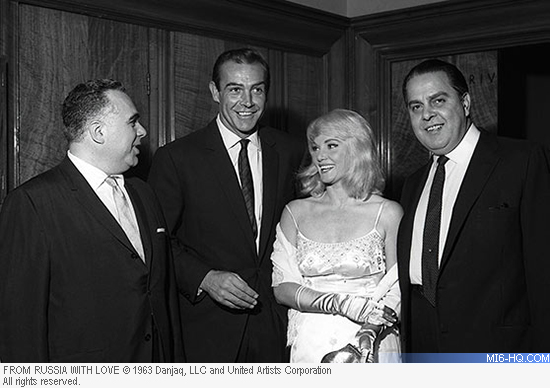
1967’s 'You Only Live Twice' was Connery’s last Bond movie under contract. When the star arrived on location in Tokyo with his then wife Diane Cilento, he was one of the most idolized men on the planet. He expressed to The Observer in 1998, “I had no idea of that scale of reverence and pressure. It was around the same time as The Beatles. The difference of course was that there were four of them to kick it around and blame each other.”
In Japan, the paparazzi followed Connery’s every move. “They even followed me into the ruddy toilet. Coming at me like a firing squad. I’ve never known it like this before. I knew Bond was popular but this has been incredible.” But it was not just money and media pressure that turned Connery off Bond - it was the duration each film was taking to make. “The final straw was ‘You Only Live Twice’…That took six months of my time - and that on top of two or three postponements. I could never give a firm date to anyone else and that meant I missed out on other parts I wanted to do, all because of Bond.”
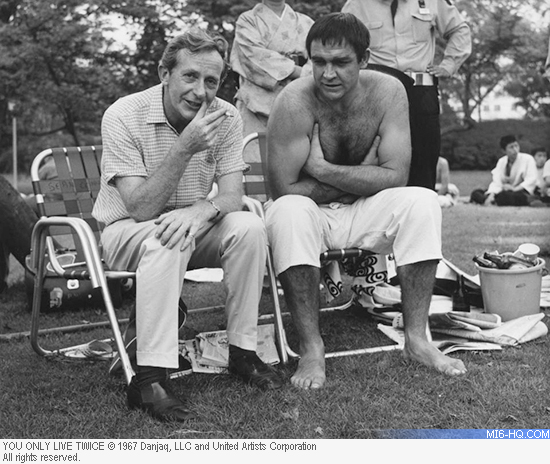
At the premiere of ‘You Only Live Twice,’ even the Queen was intrigued by the news that Connery was quitting. Connery reportedly told the press, “I will only do things that passionately interest me for the remaining thirty-five years of my life.”
Between Bond movies Connery strove be break free of the Bond mold and prove himself as an actor. Alfred Hitchcock cast him in ‘Marnie’ (1964) and he gave a blistering performance in Sidney Lumet’s ‘The Hill’ (1965), a dark brutal examination of the de-humanisation of British troops in the North African desert. He played a bohemian poet in ‘A Fine Madness’ (1966) and once free of 007, chose a western co-starring Brigitte Bardot, ‘Shalako’ (1968). But none of these films set the box office on fire.
When Connery’s replacement as James Bond, George Lazenby, walked away following 'On Her Majesty's Secret Service' (1969), United Artists put pressure on Saltzman and Broccoli to get Connery back. UA’s David Picker recalled, “The only way I could get him back was to make a series of conditions that would enable him to do the film on the terms that he felt comfortable with. Harry and Cubby really were smart enough to realise that the only way to save the series was to have Sean.”
EON's Associate producer, Stanley Sopel, was dispatched to meet with Connery and his agent Richard Hatton and over a bottle of scotch discussed the possibilities. Then, David Picker made an offer Connery could not refuse: a salary of $1.25 million plus a reported 12.5 per cent of the gross. Additionally, UA were prepared to back two projects of Connery’s choice. An agreement was made that Connery would be paid $145,000 for every week the production went over schedule. Ironically 'Diamonds Are Forever' (1971) wrapped at 4 o’clock on the last day of his contract.
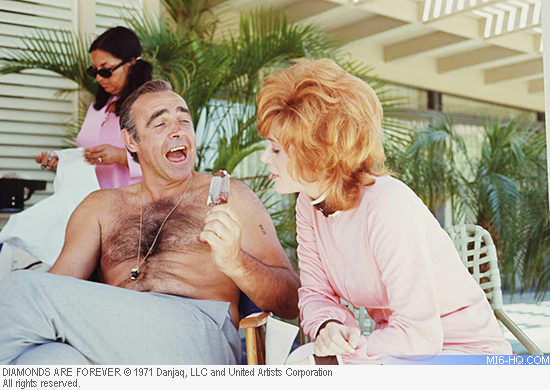
Connery threw himself into ‘Diamonds Are Forever’ with enthusiasm. Screenwriter, Tom Mankiewicz told Tom Soter, “I was surprised by how much homework he had done. He had gone through [the script] very carefully and the thing that was surprising to me was that most of the notes he had were for other parts. For instance, he would say, ‘Couldn’t she say something better than this to that guy?’ Most of the time it had nothing to do with him.”
With his sixth James Bond movie behind him Connery quipped “Positively, definitely, beyond a shadow of doubt, the last Bond.” Next came ‘The Offence’ (1973) the first picture made under his ‘Diamonds’ deal with UA. Hailed by many to be one of Connery’s finest performances, he portrayed a world-weary police detective whose years of investigating horrendous crimes had brought him to the verge of a breakdown.

In the early 1970s, Connery's career slumped with experimental roles in John Boorman’s ‘Zardoz’ (1974) John Milius’ ‘The Wind And the Lion’ (1975) and Richard Lester’s autumnal ‘Robin and Marian’ (1976). However, the on-screen magic between Connery and Michael Caine in John Huston’s ‘The Man Who Would Be King’ (1975) was a career high.
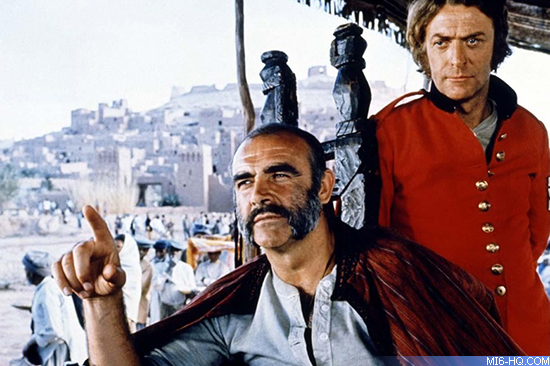
In 1975 Bond entered Connery’s ether once more. Kevin McClory’s ten-year moratorium on producing a film from his ‘Thunderball’ rights had expired and he sought Connery’s input, “I knew Sean didn’t want to play Bond again, but he knows more about Bond than anyone else and has a vast number of ideas about what Bond can do.” It was an inspired decision as Connery had developed writing tendencies as a poet and screenwriter. McClory felt the star “did not just contribute throwaway lines, he also got involved in the construction of the plot. He made enormous contributions and we got on very well.” The screenplay was written with established thriller writer Len Deighton.
In 1978 Sean Connery intimated he would also return to the role of James Bond. Connery had found his work with Len Deighton on the screenplay rewarding, and told British journalist Barry Norman, “I was discussing it with my wife. She said, ‘Well, if it’s going so well why don’t you play the part?’ And coming from her I gave it more thought than I normally would I suppose. It seemed quite a good idea after all these years.”
‘James Bond of the Secret Service,’ experienced many false starts until Hollywood lawyer turned producer, Jack Schwartzman took on the project, which, ultimately under a complete re-write became ‘Never Say Never Again’ (1983). In October 1981, Connery signed on for $5 million plus a percentage of the gross. Connery’s then agent, Dennis Selinger said, “I’m sure he just did it out of pique to Broccoli and Saltzman.” The critics couldn’t praise the film enough with one saying “One of those show business miracles that never happen.”
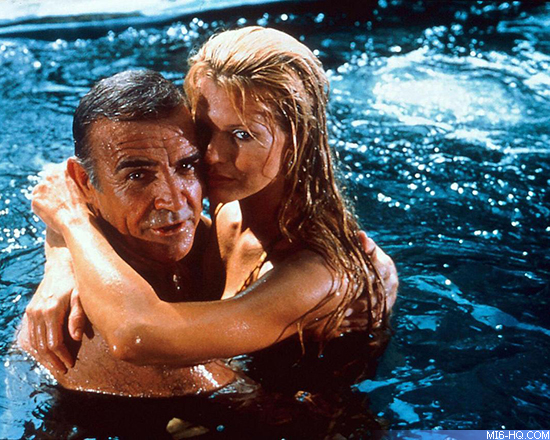
‘Never Say Never Again’ returned Sean Connery to bankable movie star. Maturity served him well and great roles came looking for him. At the age of 60, America’s People magazine voted him the sexist man alive. The fourteenth century period drama, ‘The Name Of The Rose’ (1986) won him critical acclaim but he was crowned with an Academy Award for his role in Brian De Palma’s ‘The Untouchables’ (1987) as the grizzled Irish-American cop Jimmy Malone. He was cast as Harrison Ford’s father in ‘Indiana Jones and The Last Crusade’ (1989) as Steven Spielberg thought, “Who better than the original James Bond to have given birth to this archaeologist and adventurer?” Connery played an idealistic Russian submarine commander opposite Alec Baldwin in ‘The Hunt for Red October’ (1990) and a publisher turned reluctant spy in ‘The Russia House’ (1990) alongside Michelle Pfeiffer.
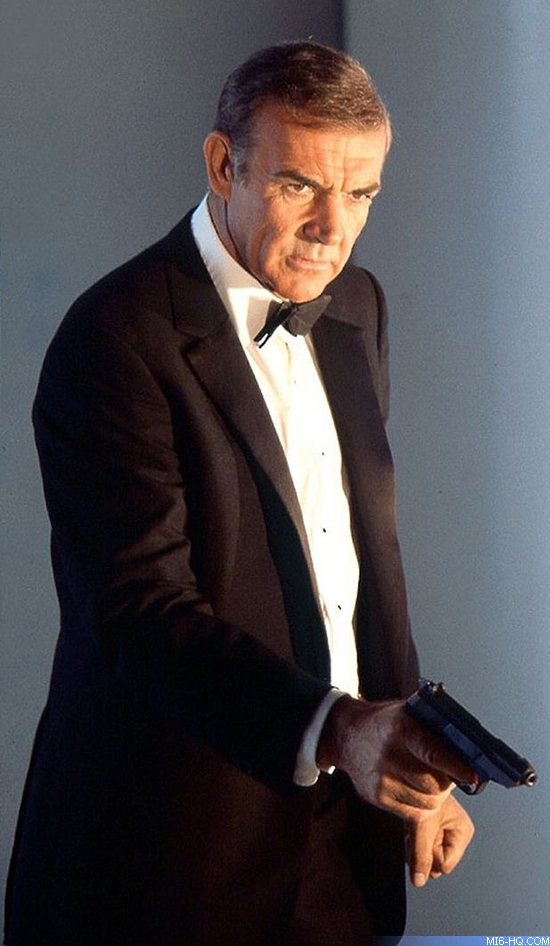
Throughout the 1990s Sean Connery retained star power. Michael Bay cast him in his high-octane blockbuster ‘The Rock’ (1996), and he starred opposite a much younger Catherine Zeta-Jones in ‘Entrapment’ (1999). An overdue Knighthood came in 2000 but by 2003 Connery had become disillusioned with the movie business. The production of Connery’s last picture, ‘The League of Extraordinary Gentlemen’ (2003) was a disaster and he made no secret that he personally blamed the director, Stephen Norrington, who he said should be “locked up for insanity”. He announced his retirement shortly after. He did return fleetingly to the world of Bond to voice the ‘From Russia With Love’ video game.
Rumours concerning Sean Connery’s return to Bondage circled for years. He wryly commented, “I hear about my supposed return every year. There have been no overtures made to me. I would certainly consider it. But quite frankly, I don’t think they could afford me!” There had been fleeting talks of offering Connery the role of Kincade in 'Skyfall' (2012) but there was a fear it would overshadow the movie.
Interviews always came back to James Bond 007. He approved of Daniel Craig’s casting and reflected on the enduring appeal of the franchise, “I think the timings is always the case with movies. It did come along at the end of the kitchen sink dramas. It was still a bad time in Britain. So many people identified with somebody getting away with all these dollies.” To quote Steven Spielberg, Sir Sean Connery was, “One of the five genuine movie stars in the world.”
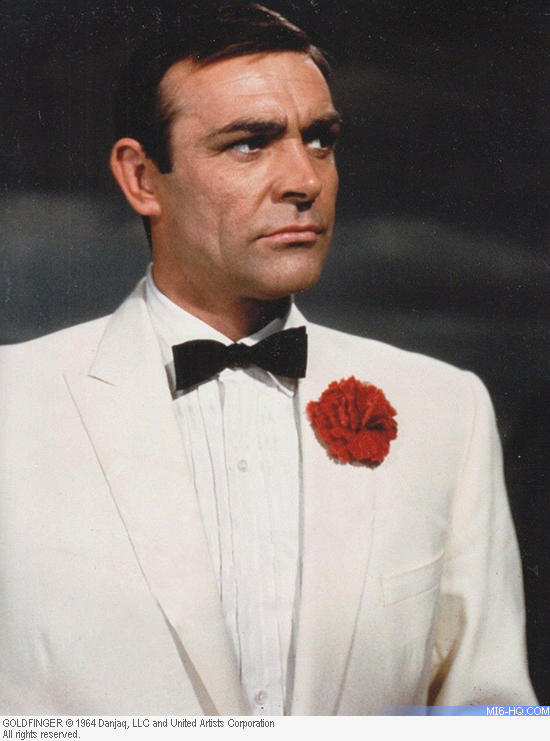
With thanks to Ajay Chowdhury.
Get Bond in Your Inbox
Sign up for occasional email updates from MI6. Get notified of breaking Bond news, and digests of recently releases features:








